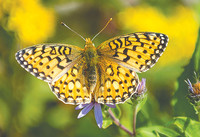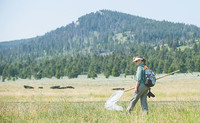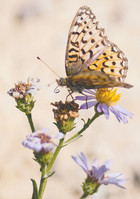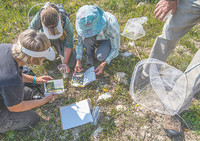Cloudy, 50° F
With nets in hand, more than a dozen area residents could be seen trying their hand at capturing the beautiful insects in the margins between Chief Joseph Highway and the Beartooth Mountains Friday.
Some employed the standard chase while others …
This item is available in full to subscribers.
The Powell Tribune has expanded its online content. To continue reading, you will need to either log in to your subscriber account, or purchase a subscription.
If you are a current print subscriber, you can set up a free web account by clicking here.
If you already have a web account, but need to reset it, you can do so by clicking here.
If you would like to purchase a subscription click here.
Please log in to continue |
|





The problem with counting butterflies is, you have to catch them first — no easy feat.
With nets in hand, more than a dozen area residents could be seen trying their hand at capturing the beautiful insects in the margins between Chief Joseph Highway and the Beartooth Mountains Friday.
Some employed the standard chase while others stood in wait, hoping the butterflies would come to them. None were as proficient as Mindi Oechsner, a 5-year-old kindergarten student at Southside Elementary School in Powell. Oechsner had endless energy for chasing the winged gems through the hillside, but had little to say as she concentrated on the chase.
Her favorite thing about butterflies? “Catching them,” she said.
She was bringing in specimens so fast that the adults charged with identifying each one were falling behind. But while the catching is a light-hearted activity, the data the count provides is serious business.
“Butterflies are an indicator species,” said Bobbie Holder, Park County horticulturalist. “They’re like a canary in the coal mine. Their life spans are short, and declines in their numbers can indicate issues in the environment,” she said.
The count, in its seventh year, has been organized by Holder in cooperation with the North American Butterfly Association (NABA). The organization has been running counts and collecting data in the U.S., Canada and Mexico since 1993.
There are about 450 local group counts, which consist of a compilation of all butterflies observed at sites within a 15-mile diameter count circle in a one-day period. The data collected provides important information about the geographical distribution and relative population sizes of species counted, according to the NABA. Comparisons of the results can be used to monitor changes in butterfly populations and study the effects of weather and habitat change.
Karen Hankins of Crandall caught a nice-sized Rocky Mountain Parnassian early in the Park County count.
“They’re not rare, but they’re beautiful,” Hankins said. It’s her fourth season with the count, and she loves any activity that gets her out in nature.
Before the Park County count began, there wasn’t any data being kept about the populations that visit the area. It will take many more years before there’s enough data to start interpreting the information collected here, Holder said. The average annual count is about 300 butterflies. It is one of three counts in the state; the other two occur in Lander and at Yellowstone National Park.
“We don’t know what’s out here yet,” said Holder, who’s been a Park County extension agent for 18 years. “And we only take care of what we know and love.”